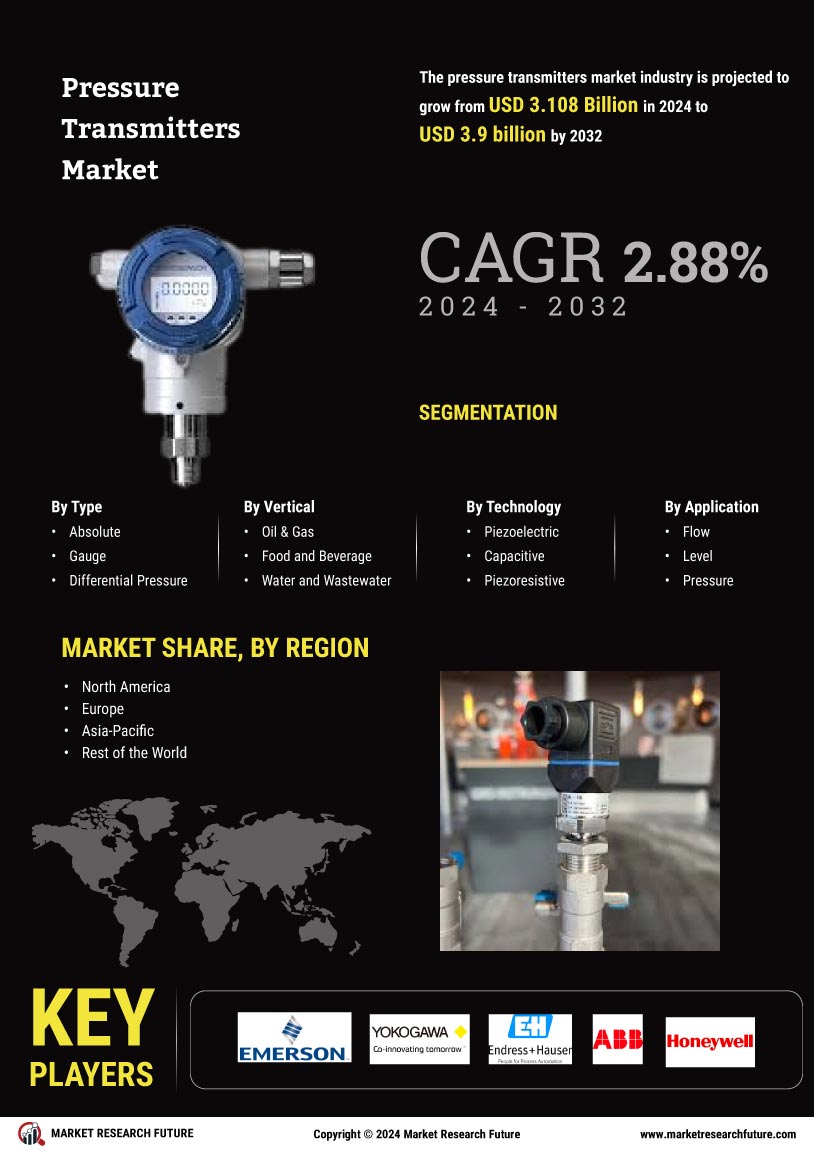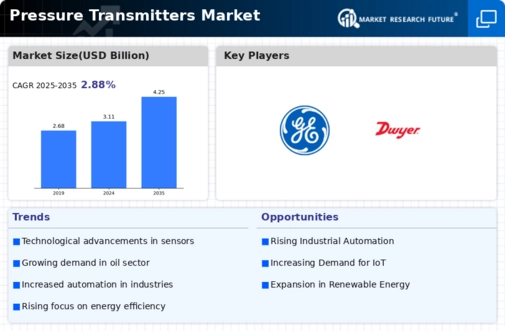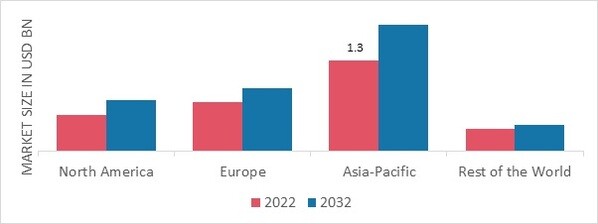Market Growth Projections
The Global Pressure Transmitters Market Industry is projected to experience substantial growth over the next decade. With a market value of 3.11 USD Billion in 2024, it is expected to reach 4.25 USD Billion by 2035. This growth trajectory indicates a compound annual growth rate (CAGR) of 2.88% from 2025 to 2035. The increasing demand across various sectors, including oil and gas, water management, and industrial automation, contributes to this positive outlook. As industries continue to prioritize precision and efficiency, the market for pressure transmitters is likely to expand, driven by technological advancements and regulatory compliance.
Technological Advancements
Technological advancements play a pivotal role in shaping the Global Pressure Transmitters Market Industry. Innovations in sensor technology, wireless communication, and digital integration enhance the functionality and reliability of pressure transmitters. These advancements enable real-time monitoring and data analytics, which are crucial for optimizing industrial processes. As industries seek to improve efficiency and reduce operational costs, the demand for state-of-the-art pressure transmitters is likely to rise. The integration of IoT capabilities into pressure transmitters is expected to further drive market growth, as industries increasingly prioritize smart solutions.
Rising Demand in Oil and Gas Sector
The Global Pressure Transmitters Market Industry experiences a notable surge in demand driven by the oil and gas sector. As exploration and production activities intensify, the need for accurate pressure measurement becomes paramount. Pressure transmitters are essential for monitoring and controlling processes in drilling, refining, and distribution. In 2024, the market is projected to reach 3.11 USD Billion, reflecting the industry's reliance on advanced measurement technologies. The increasing complexity of extraction processes necessitates precise pressure management, which further propels the adoption of pressure transmitters in this sector.
Growth in Water and Wastewater Management
The Global Pressure Transmitters Market Industry benefits from the growing emphasis on water and wastewater management. As urbanization accelerates, the demand for efficient water supply and treatment systems rises. Pressure transmitters are integral to monitoring water pressure in pipelines and treatment facilities, ensuring optimal performance and safety. The increasing investment in infrastructure projects aimed at improving water quality and availability is expected to bolster the market. By 2035, the market is projected to reach 4.25 USD Billion, indicating a sustained growth trajectory driven by the need for effective water management solutions.
Industrial Automation and Process Control
The Global Pressure Transmitters Market Industry is propelled by the ongoing trend of industrial automation and process control. As industries strive for enhanced productivity and efficiency, the integration of automation technologies becomes essential. Pressure transmitters are critical components in automated systems, providing accurate pressure data for process optimization. The anticipated compound annual growth rate (CAGR) of 2.88% from 2025 to 2035 underscores the increasing reliance on automated solutions. Industries are likely to invest in advanced pressure transmitters to facilitate seamless integration into their automated processes, further driving market expansion.
Regulatory Compliance and Safety Standards
The Global Pressure Transmitters Market Industry is significantly influenced by stringent regulatory compliance and safety standards across various sectors. Industries such as pharmaceuticals, food and beverage, and chemicals are mandated to adhere to specific pressure measurement protocols to ensure product quality and safety. This regulatory landscape compels companies to invest in reliable pressure transmitters that meet these standards. As regulations evolve, the demand for advanced pressure transmitters that can provide accurate and consistent measurements is likely to increase, thereby driving market growth.












